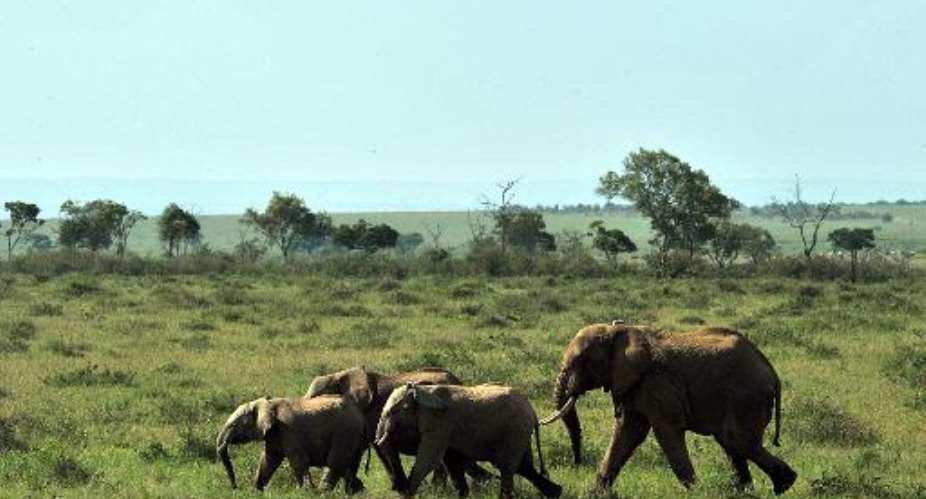Twelve elephant calves found dead near a famed Zimbabwean game reserve died from a bacterial infection, wildlife authorities said Tuesday.
The pachyderms were discovered late last week in Zimbabwe's northern Pandamasuwe forest, tucked between Hwange National Park and the town of Victoria Falls.
Rangers had ruled out cyanide poisoning or poaching because the animals were found with their tusks intact.
"I have a report which said there was a bacterial infection," parks and wildlife authority spokesman Tinashe Farawo told AFP.
The dead animals were young elephants between two and six years old.
Farawo said the calves were too short to reach treetop leaves and may have ingested the bacteria by grazing on infected plants.
Zimbabwe counts more than 84,000 elephants -- almost double the southern African country's ecological carrying capacity of between 45,000 and 50,000.
Hwange, which sprawls over 14,600 square kilometres (5,600 square miles), has a normal maximum capacity of 15,000 elephants but currently holds between 45,000 and 53,000.
Scores of its pachyderms have succumbed to starvation and lack of water in recent years as a result.
Others have been poisoned by poachers for their ivory, used to make ornaments and traditional medicine in Asia and the Middle East.
At least 300 elephants died of cyanide poisoning at water holes in Hwange in 2013.
Neighbouring Botswana, home to the world's largest elephant population of around 130,00, lost around 300 elephants early this year. They are thought to have succumbed to natural toxins.





 Saglemi Housing Project will not be left to rot – Kojo Oppong Nkrumah
Saglemi Housing Project will not be left to rot – Kojo Oppong Nkrumah
 Transport fares hike: GPRTU issue two-day ultimatum
Transport fares hike: GPRTU issue two-day ultimatum
 ARC endorses Alan as presidential candidate – Buaben Asamoa
ARC endorses Alan as presidential candidate – Buaben Asamoa
 Akufo-Addo appoints Kwasi Agyei as new Controller and Accountant-General
Akufo-Addo appoints Kwasi Agyei as new Controller and Accountant-General
 PNC dismiss reports of mass resignations
PNC dismiss reports of mass resignations
 PAC advocates for revenue collectors to be engaged on commission basis, not full...
PAC advocates for revenue collectors to be engaged on commission basis, not full...
 Genser Energy commissions 110km of natural gas pipeline at Anwomaso
Genser Energy commissions 110km of natural gas pipeline at Anwomaso
 Naa Torshie calls for tolerance, peace ahead of 2024 election
Naa Torshie calls for tolerance, peace ahead of 2024 election
 Asantehene commends Matthew Opoku Prempeh for conceiving GENSER Kumasi Pipeline ...
Asantehene commends Matthew Opoku Prempeh for conceiving GENSER Kumasi Pipeline ...
 Let’s do away with ‘slash and burn politics’ in Ghana — Dr Adutwum
Let’s do away with ‘slash and burn politics’ in Ghana — Dr Adutwum
